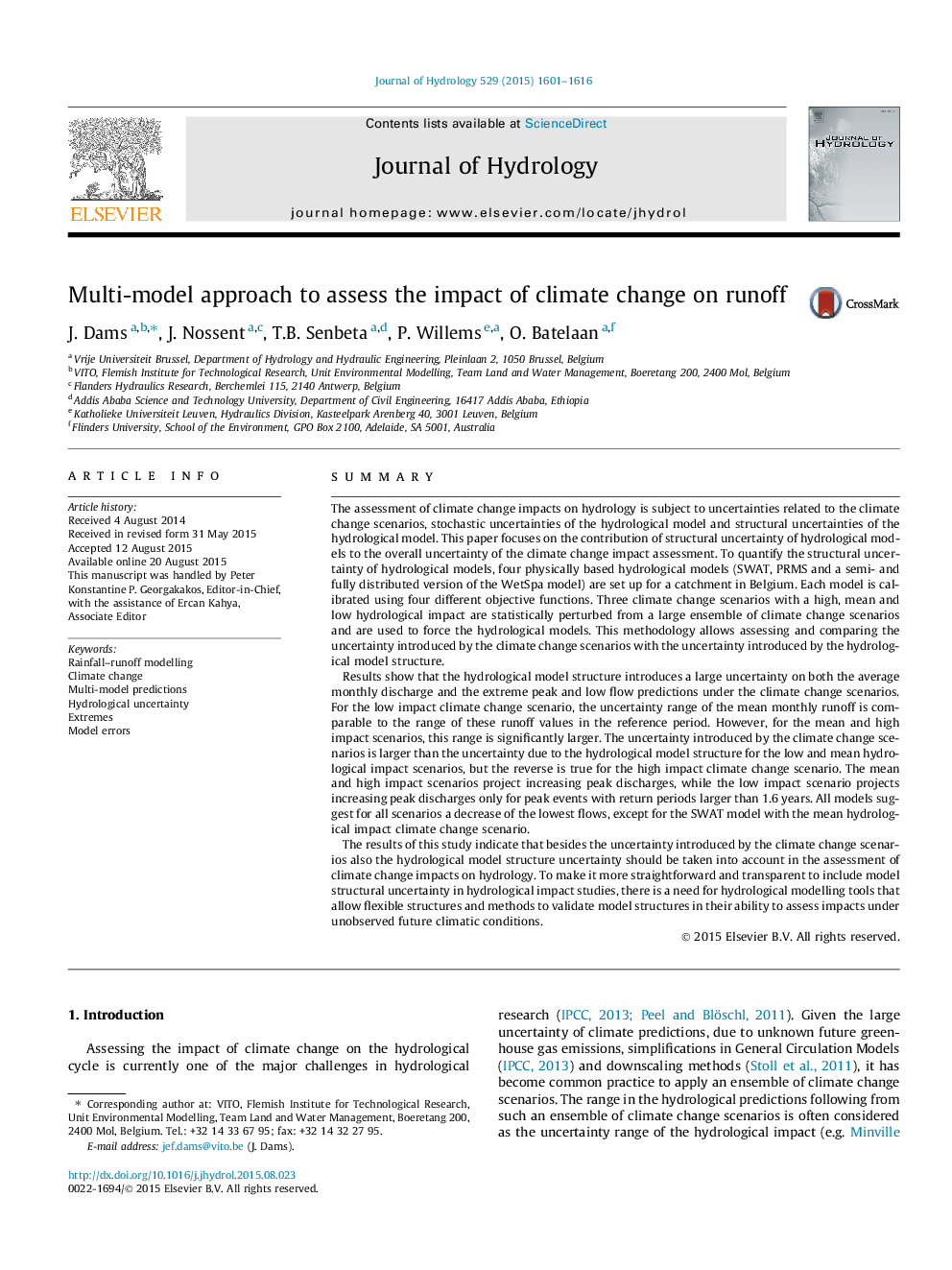| کد مقاله | کد نشریه | سال انتشار | مقاله انگلیسی | نسخه تمام متن |
|---|---|---|---|---|
| 6410817 | 1332885 | 2015 | 16 صفحه PDF | دانلود رایگان |
- Application of an ensemble of hydrological models on 3 climate change scenarios.
- Comparison of hydrological model versus climate change uncertainty.
- Assessment of the impact of climate change on hydrological extremes.
- Importance of hydrological model structure uncertainty for ungauged climates.
SummaryThe assessment of climate change impacts on hydrology is subject to uncertainties related to the climate change scenarios, stochastic uncertainties of the hydrological model and structural uncertainties of the hydrological model. This paper focuses on the contribution of structural uncertainty of hydrological models to the overall uncertainty of the climate change impact assessment. To quantify the structural uncertainty of hydrological models, four physically based hydrological models (SWAT, PRMS and a semi- and fully distributed version of the WetSpa model) are set up for a catchment in Belgium. Each model is calibrated using four different objective functions. Three climate change scenarios with a high, mean and low hydrological impact are statistically perturbed from a large ensemble of climate change scenarios and are used to force the hydrological models. This methodology allows assessing and comparing the uncertainty introduced by the climate change scenarios with the uncertainty introduced by the hydrological model structure.Results show that the hydrological model structure introduces a large uncertainty on both the average monthly discharge and the extreme peak and low flow predictions under the climate change scenarios. For the low impact climate change scenario, the uncertainty range of the mean monthly runoff is comparable to the range of these runoff values in the reference period. However, for the mean and high impact scenarios, this range is significantly larger. The uncertainty introduced by the climate change scenarios is larger than the uncertainty due to the hydrological model structure for the low and mean hydrological impact scenarios, but the reverse is true for the high impact climate change scenario. The mean and high impact scenarios project increasing peak discharges, while the low impact scenario projects increasing peak discharges only for peak events with return periods larger than 1.6Â years. All models suggest for all scenarios a decrease of the lowest flows, except for the SWAT model with the mean hydrological impact climate change scenario.The results of this study indicate that besides the uncertainty introduced by the climate change scenarios also the hydrological model structure uncertainty should be taken into account in the assessment of climate change impacts on hydrology. To make it more straightforward and transparent to include model structural uncertainty in hydrological impact studies, there is a need for hydrological modelling tools that allow flexible structures and methods to validate model structures in their ability to assess impacts under unobserved future climatic conditions.
Journal: Journal of Hydrology - Volume 529, Part 3, October 2015, Pages 1601-1616
